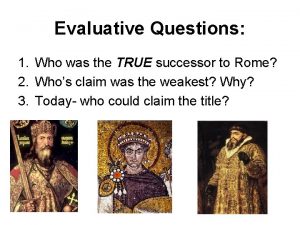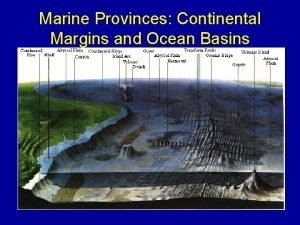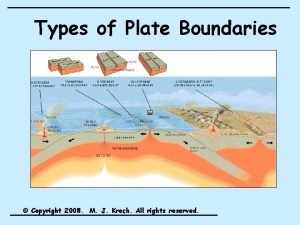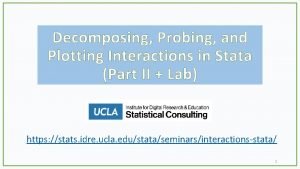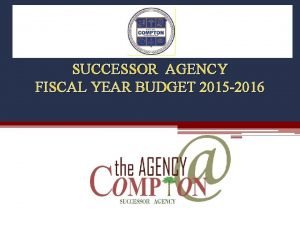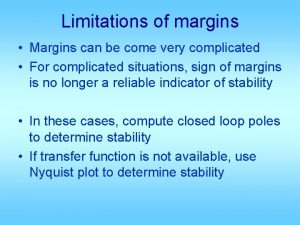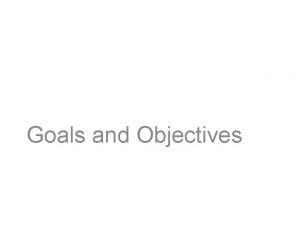MARGINS Successor Education Planning Workshop Goals Review and







- Slides: 7

MARGINS Successor Education Planning Workshop Goals: • Review and evaluate impact and effectiveness of existing MARGINS education programs • Develop strategic goals and measures for success for next 5 years – where do we want to go with E & O • Develop recommendations for specific new education and outreach programs Workshop Outcome – vision statement for presentation at February MARGINS Successor planning meeting

Review of MARGINS Education Programs 1) Distinguished Lecture Program 2) Mini-lessons, hosted on SERC website 3) Graduate student presentation award and forum at Fall AGU 4) Post-doctoral program

Distinguished Key Facts: Lecturer Program (DLP) • Started in 2005 • Advertised though listservs, GSA Today, EOS, and brochures sent to approximately 900 colleges and universities. • Currently 7 speakers • Run through MARGINS Office • 330 institutions have applied to the DLP to date • 75 institutions have been visited • For 2009 -2010, 55% of applications (66) were from institutions primarily serving underrepresented student groups • The lectures are videoed and power-point presentations are available on the MARGINS web page

Distinguished Lecturer Program (DLP) Decadal Review Committee Comments: • We encourage the Steering Committee to choose one charismatic early career scientist for the Distinguished Lecturer Program (DLP) each year. • We suggest that the Public Lecture of each Distinguished Lecturer is videoed and made available to all, on the website. Each video should permanently remain on the website, leading to a large body of available lectures as the Program matures. • We recommend that as part of the application to host a Distinguished Lecturer, the institution should be asked to explain how the Public Lecture will be accessible to a broad and large public audience. The response should be used in the decision making for choosing host institutions. • Lastly, we propose that the DLP should expand to include international institutions, especially those who will be collaborating in MARGINS- 2010 research.

MARGINS Mini-lessons Key Facts: • Initially supported by an NSF CCLI grant funded in December 2006 (PIs: Geoff Abers, Cathy Manduca, Jeff Ryan, and Don Reed). The overall goal was to adapt materials produced by the world-class scientists doing MARGINS-related research to lecture segments, laboratory exercises, and teaching modules that could be easily used by teachers to instruct students about current MARGINS areas of research. • Five workshops and individual contributions have resulted in a collection of more than 30 mini-lessons that cover the full range of MARGINS science. • Additional workshops and sessions at GSA/AGU have focused on data resources and mini-lessons that are in use today. • The mini-lessons are externally reviewed by the MARGINS steering committee and end-users. • Detailed assessments are being carried out on specific mini-lessons now through the SERC MARGINS minilesson portal:

MARGINS Successor- Strategic goals & measures of success Basic goals of an Education and Outreach program: • Make science results and data accessible and engaging to educators and students • Increase visibility of breakthrough science and scientists How? • Continue existing programs, but better or larger? • Reach new audiences? K-12 Teachers Community Colleges Grad student-post-doc-early career linkage Under-represented groups, increase diversity • Add an undergraduate research component? • Practical considerations – so far, efforts have been volunteer + small MARGINS office effort - is a dedicated staff person(s) needed? • Are there other programs/resources that we can link with to enhance our efforts? (IODP, IRIS, COSEE, GLOBE)



